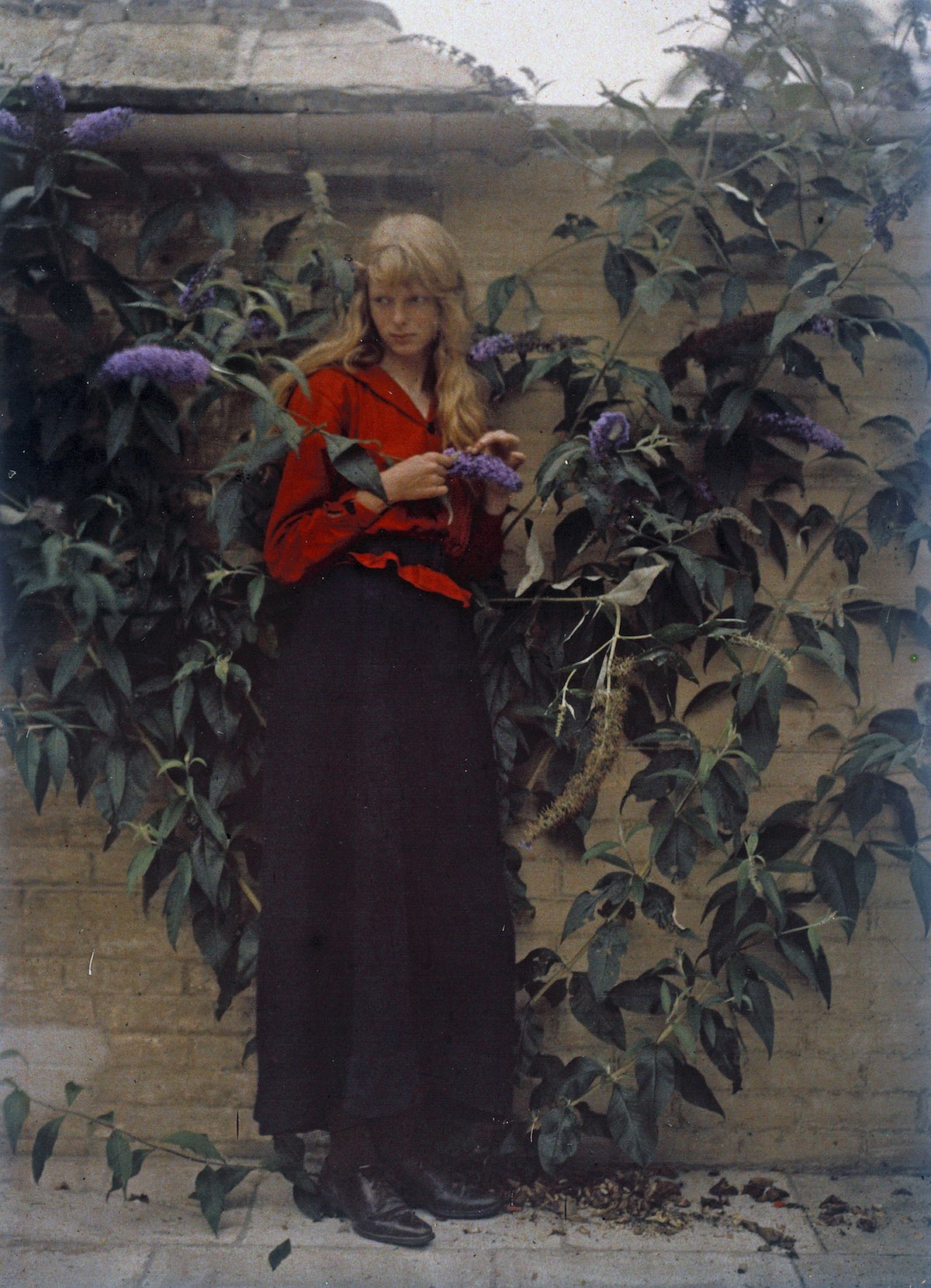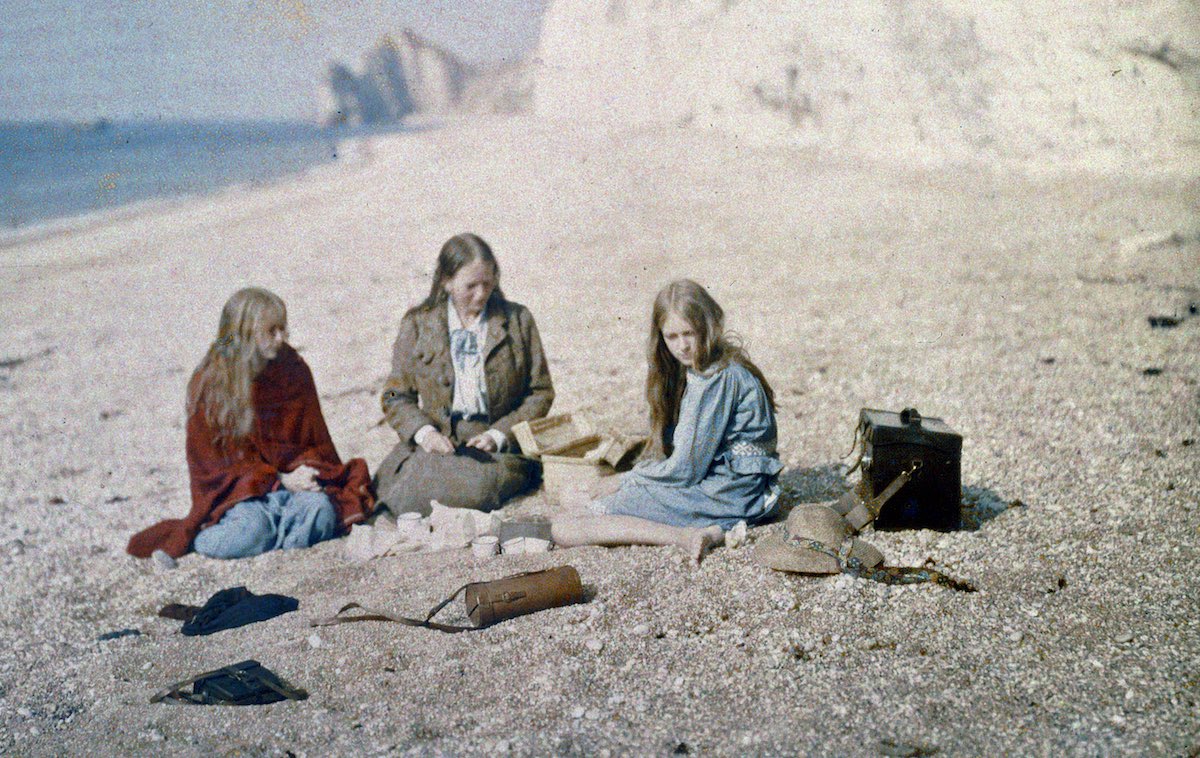Mervyn O’Gorman was 42 when he took these pictures of his daughter, Christina O’Gorman at Lulworth Cove, in the English county of Dorset. He photographed Christina wearing a red swimming costume and red cloak, a colour particularly suited to the early color Autochrome process.
Autochrome was one of the first colour photo technologies, which used glass plates coated in potato starches to filter pictures with dye.
To his friends, Mervyn O’Gorman was “O.G.” He had qualified as an electrical engineer and worked for cabling companies, and in 1909 he became superintendent of the Royal Balloon Factory, later the Royal Aircraft Factory. He was an enthusiastic early motorist, and published O’Gorman’s Motoring Pocket Book in 1904.
Yet O’Gorman’s hobby was photography. He took these images in 1913.
Mervyn died in March 1958 as a widower; his wife Florence had died 27 years earlier in 1931. As to Christina’s life, there are no recorded details.

Christina, taken on the beach at Lulworth Cove, Dorset. The comparatively long exposure time has given the sea a glassy quality and the large aperture setting and narrow depth of field has put Durdle Door in the background into soft focus.
IMAGE: RPS/SCIENCE AND SOCIETY PICTURE LIBRARY/GETTY IMAGES
O.G. was a man of great charm and humour, always interesting in discussion.SIR GEOFFREY DE HAVILLAND
A dramatic and comparatively unusual close-up portrait of Christina. The large aperture setting has reduced the background to near abstraction and the lack of any obvious period references gives this image a remarkably modern feel.
IMAGE: RPS/SCIENCE AND SOCIETY PICTURE LIBRARY/GETTY IMAGES

A portrait of Christina, gazing thoughtfully into an ornamental pond. The location for this photograph is not known but may possibly be the gardens of Rempstone Hall near Corfe Castle in Dorset.
IMAGE: RPS/SCIENCE AND SOCIETY PICTURE LIBRARY/GETTY IMAGES
 PROMOTED BY GAPFuture Focused: Why Gap is investing in life education programs for women
PROMOTED BY GAPFuture Focused: Why Gap is investing in life education programs for women
IMAGE: RPS/SCIENCE AND SOCIETY PICTURE LIBRARY/GETTY IMAGES

IMAGE: RPS/SCIENCE AND SOCIETY PICTURE LIBRARY/GETTY IMAGES

O’Gorman captures a timeless scene as his family eat their picnic on the beach in Dorset, with Durdle Door in the background. In 1897 O’Gorman had married Florence Rasch, who is sitting between their two daughters. O’Gorman’s camera case can be seen close by. One of the great advantages of the process was that it didn’t require special apparatus – photographers could use Autochrome plates in their existing cameras.
IMAGE: RPS/SCIENCE AND SOCIETY PICTURE LIBRARY/GETTY IMAGES

A serene, almost surreal photograph of Christina paddling in the sea at Lulworth Cove in Dorset. The long exposure time required, even in bright sunshine, has given the sea an unreal glass-like quality. The vivid red of her costume is in dramatic contrast to the subdued natural tones of the background. In the distance you can just see the rowing boat, where she was also photographed that same day.
IMAGE: RPS/SCIENCE AND SOCIETY PICTURE LIBRARY/GETTY IMAGES
The Drawn By Light exhibition at the Media Museum, in Bradford, UK, featuring a Christina Gorman Autochrome, runs until June 21.
Amanda Uren












